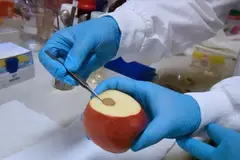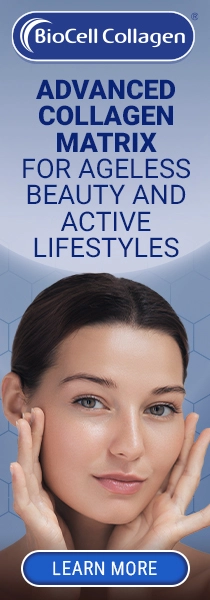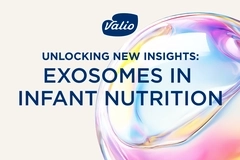Nanotechnology brings vitamin C detection to consumers’ fingertips
Key takeaways
- University of Queensland scientists developed a nanoprobe that measures vitamin C levels in produce using smartphone-based color detection.
- The CoOOH@BSA-FITC nanoprobe changes color with vitamin C concentration, offering rapid, precise freshness and nutrition assessment.
- Beyond consumer use, the technology aids agriculture by monitoring plant health and nutrient status and optimizing crop yield.
Consumers may soon be able to gauge the freshness and nutritional value of fruits and vegetables with their smartphone, due to a groundbreaking nanoprobe developed at the University of Queensland (UQ) in Australia. The technology uses particle-sized sensors to detect ascorbic acid — vitamin C — in fresh produce and juices.
Consumers may soon be able to gauge the freshness and nutritional value of fruits and vegetables with their smartphone, due to a groundbreaking nanoprobe developed at the University of Queensland (UQ) in Australia. The technology uses particle-sized sensors to detect ascorbic acid — vitamin C — in fresh produce and juices.
When applied to samples or paper testing strips, the probes change color to indicate vitamin C concentration. The colors range from dark brown for low levels to yellow for high, providing an instant, visual estimation of freshness and nutritional quality.
“Things like exposure to heat, oxygen, and light all accelerate vitamin C degradation, as does the quality of the soil or pesticide use during the growing process,” explains lead researcher Dr. Run Zhang, from UQ’s Australian Institute for Bioengineering and Nanotechnology.
“Measuring vitamin C is therefore an essential step for producers, regulatory agencies, and consumers who want to simply evaluate food freshness and nutritional content.”

Smartphone-powered food freshness monitoring
Led by Zhang, the innovation centers on cobalt hydroxide (CoOOH) and bovine serum albumin (BSA) fluorescein conjugate (BSA-FITC). The innovation is termed CoOOH@BSA-FITC because the nanoparticles feature a hexagonal CoOOH core coated with fluorescent BSA-FITC.
Lead author of the study and current Ph.D. candidate, Dihua Tian, says the coating degrades in the presence of vitamin C, restoring fluorescence and producing a visible color change with detection sensitivity of 2.07 μg/mL, which the researchers say is significantly sensitive. Additionally, the nanoprobe works across a wide pH range and offers precision unmatched by conventional methods.
Tests on commercial and fresh juices confirmed accuracy against conventional high-performance liquid chromatography testing. Moreover, the researchers state that the paper-based strips paired with a smartphone app make rapid, onsite measurement possible.
“We see great potential for more user-friendly analysis,” Dihua reveals. “Ultimately, this is technology that could be used in tandem with colour visualiser phone applications that can scan a testing strip coated in our nanoprobes and tell you exactly how fresh and healthy the food is.”
Nanoprobe applications for precision agriculture
Beyond consumer applications, the researchers say the nanoprobe shows promise in agriculture. By infiltrating plant leaves, the probe can reveal ascorbic acid levels, illuminate stress responses, reveal nutritional status, and help predict growth conditions in crops like tobacco, rice, and tomatoes.
Fluorescence intensity correlates with plant health, and the nanoprobe could enable growers to “fine-tune” nutrition and optimize yield.
“Ultimately, we would be supporting environmental sustainability and optimizing nutrient management in crops,” Zhang concludes.















